![]()
![]()
![]()
Use LEFT and RIGHT arrow keys to navigate between flashcards;
Use UP and DOWN arrow keys to flip the card;
H to show hint;
A reads text to speech;
10 Cards in this Set
- Front
- Back
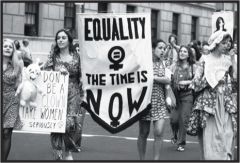
What is the difference between women and other oppressed groups?
|
The difference between women and other oppressed groups such as blacks, Jews, Proletariat is that women have never been strangers to other human beings. Women and men have always coexisted. Women have always been women, there was no ‘before’, no single event that led to the oppression of women. Women live ‘dispersed’ among men; there is no unification.
However, in a globalised world this can be heavily challenged. |
|
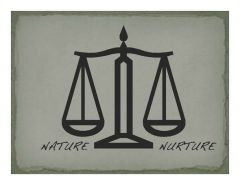
If adopting the view that there is a dichotomy between nature and nurture, how is this view justified?
|
The woman is a womb: this locks them into womanhood and subjectivity. Women’s subordination is due to their inherent child bearing characteristics
|
|

Who famously adopted this view? Can you summarise their argument?
|
> Ortner argues that women’s subordinate status is a result of the human mindset that human culture is superior to nature, that culture is man’s way of subduing nature.
> Women must devote a greater portion of their time and body than procreation than men, as they have more body parts and functions, such as breasts and menstruation, that solely exist for the purpose of having children. Therefore, society often confines women to a domestic familial role, freeing up the men to pursue more “cultural” endeavors like art or religion. |
|

What examples can contradict Ortner's nature/culture clear cut dichotomy?
|
> European courtly love, where women were exalted as the bearers of culture and yet were still subordinate to men. (However Ortner also gives credit to the theory that women’s sentimental tendencies are actually a result, and not cause, of a male-dominated world)
> The COUVADE (expect more questions about this one ;)) |
|
|
"Couvade" was coined by anthropologist E.B. Tylor in 1865 to describe certain rituals fathers in several cultures adopt during pregnancy during which the father can have symptoms of pregnancy and birth. Couvade is seen as the most extreme affirmation of paternity. Can you name any examples of couvade?
|
1. Brazil: Father actively takes part in the birth and is considered to give birth to the spirit of the child. There is a strong notion of a spiritual umbilical cord.
2. Ecuador: Men diet after birth and have a lack of physical activity. In this case, there is a special bond between man and woman because both partake in the birth. It goes beyond a simple imitation of pregnancy. 3. Honduras: Men take to hammock for up to 3 years. They’re dramatising maleness, not femininity. Blood strength is received from the father only. The mother and her brother go to the field and work. If the father worked it would endanger the child’s life because it uses up his blood strength which creates the soul. Not working shows strength, restraint shows masculinity. |
|

All these examples of Couvade challenge a philosopher's theory. Can you think who this philosopher is and how their theory is challenged by couvade?
|
Simone de Beauvoir (1949) argued that biology was woman's destiny, and that, according to existential philosophy, this made woman into the second sex. What she meant by this is that whereas man can transcend life through his creative acts, woman can do no more than repeat life through the procreative powers of her body. However, contrary to the common Eurocentric view so well captured by de Beauvoir, to give life is in many societies seen as an act of creation. This is illustrated by the Couvades
|
|
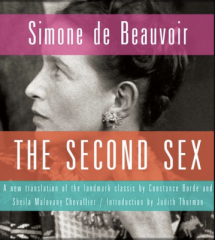
Simone de Beauvoir: “One is not born but rather becomes a woman” - The Second Sex, 1949.
When do girls learn what it means to be a woman? |
Girls learn to be women from an early age. Girls are given dolls and thus discover the meaning of the words “pretty” and “ugly” as they compare themselves to princesses. Girls learn what they think it means to be a woman through fairy tales such as Sleeping Beauty or Cinderella where the girls explore gender ideals.
|
|
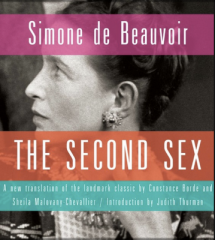
In relation to gender, what essential argument does Simone de Beauvoir put forth that has since been discussed by anthropologists (notably as a reaction to articles such as Ortner's)?
|
Simone de Beauvoir argues that girls learn to be women through their surroundings and thus Beauvoir's view of gender is that it is socially and/or culturally constructed.
|
|
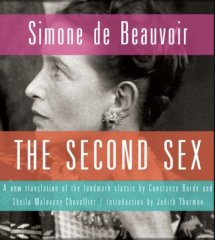
Simone de Beauvoir: “One is not born but rather becomes a woman” - The Second Sex, 1949.
What era of anthropology was Beauvoir's book published in? |
Anthropology of women!
The anthropology of women highlighted that anthropologist had omitted the female voice in their accounts. The woman’s point of view needs to be heard! Only women represent women, men only look at men. |
|
|
What anthropological movements were there after the anthropology of women?
|
Before the 1970s, the anthropology of women reigned.
> Post 1970’s: Feminist anthropology. Study of gender relations, not just women. Questioned the seemingly universal subordination of women. > 1990’s: Anthropology of gender. Shares concerns of feminism but it can be studied without being a feminist looking at feminism and/or sexuality. It’s not only about women. |

